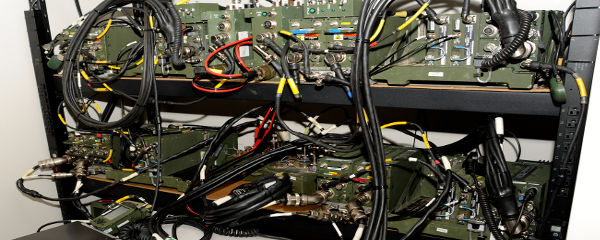What I’ve Learned:
“Faraday cage: If you can’t keep your wavelength in your pants, keep it in your Faraday.”
They say too much of anything can be bad. Sunshine. Children. Tribbles. Jalapeno chili dogs, probably, though I frankly can’t imagine how.
Too much electromagnetic radiation can be a problem, too. Whether in the form of a devastating lightning strike, a searing high-voltage current or dangerously delicious microwaves, some sorts of electricity you don’t want zapping through you. Because it might sting. Or leave a hole.
When you need to avoid catastrophically harmful electric charges, you have a couple of options. You could train really hard to get fast enough to outrun electromagnetic waves. But they move at the speed of light — since light is an electromagnetic wave, after all — so that’s probably slightly impossible. You could swap yourself out with someone who doesn’t mind going through life extra-crispy. Or you could climb into a Faraday cage.
Let’s walk through that last option. It seems the easiest. Also the least murdery.
To climb into a Faraday cage, you’ll first need to build a Faraday cage. Or buy one; maybe somebody on Etsy sells them. What you’re looking for is an enclosure made of some material that conducts material, like metal. The cage can be solid or made of mesh, so long as the holes in the mesh are smaller than the wavelengths of radiation you’re trying to keep out. Make your mesh-holes too big, and you’ll still get cooked; you’ll just get cooked in an interesting pattern. Like a steak with crosshatch grill marks, or a sunbather with “friends” who drew on his back in Coppertone.
Faraday cages work by distributing electrical charge around the structure. Since the whole cage conducts the charge, a constant voltage is created all around. Electrons in the conducting material crowd to one side or the other, effectively cancelling the electrical field zapped in. Anything (or anyone) inside the cage is protected, as there’s no voltage differential in there to generate electrical current.
The contraption is named for British physicist Michael Faraday, who conducted experiments back in the mid-1800s to prove that cages work for protection. We’re not sure if he started with cages, but since you don’t see any Faraday aquariums or Faraday litter boxes around, it’s safe to say that cages probably worked the best.
There are lots of scientific uses for Faraday cages; any time it’s useful to block an electromagnetic signal of some kind, the cage comes to the rescue. They’re used to protect computer equipment — and also car and airplane passengers — from lightning strikes and electric surges, to eliminate electromagnetic interference from sensitive tests (including MRI readouts) and to screen electrical cables from outside signals.
In less-than-scientific applications, Faraday cages have been used to keep people from electronically spying on pope-picking sessions at the Vatican, by shoplifters to block RFID signals on swiped merchandise and by thousands of doomsday preppers, paranoids and conspiracy wingdoodles to line their wallets, bomb shelters and tinfoil hats, so “the gummint” can’t track them, read their thoughts or steal their secret varmint gumbo recipes.
(Or maybe it’s the aliens they protect against. Or the Illuminati. Hell, it could be the chili dogs. Whatever.)
Also, since Faraday cages can dissipate signals that originate inside the box as well as outside, they’re very useful for shielding potentially harmful electromagnetic energy sources. Like an electrical power plant or microwave ovens or Jamie Foxx in that Spider-Man sequel, maybe.
(Maybe a Faraday cage wouldn’t hold Electro. But electrical line workers do wear “Faraday suits”, which are modified cages that keep them from getting shocks while working on high-voltage lines.
So if Foxx’s character had just worn the proper safety equipment, nobody would’ve had to sit through that hodgepodge of nonsense for two hours.)
Anyway, Faraday cages are pretty simple, really useful and great for keeping nasty electromagnetic waves away from tender vulnerable computers, equipment and humans. And those gumbo recipes. I’m sure those were exactly what Michael Faraday had in mind.




